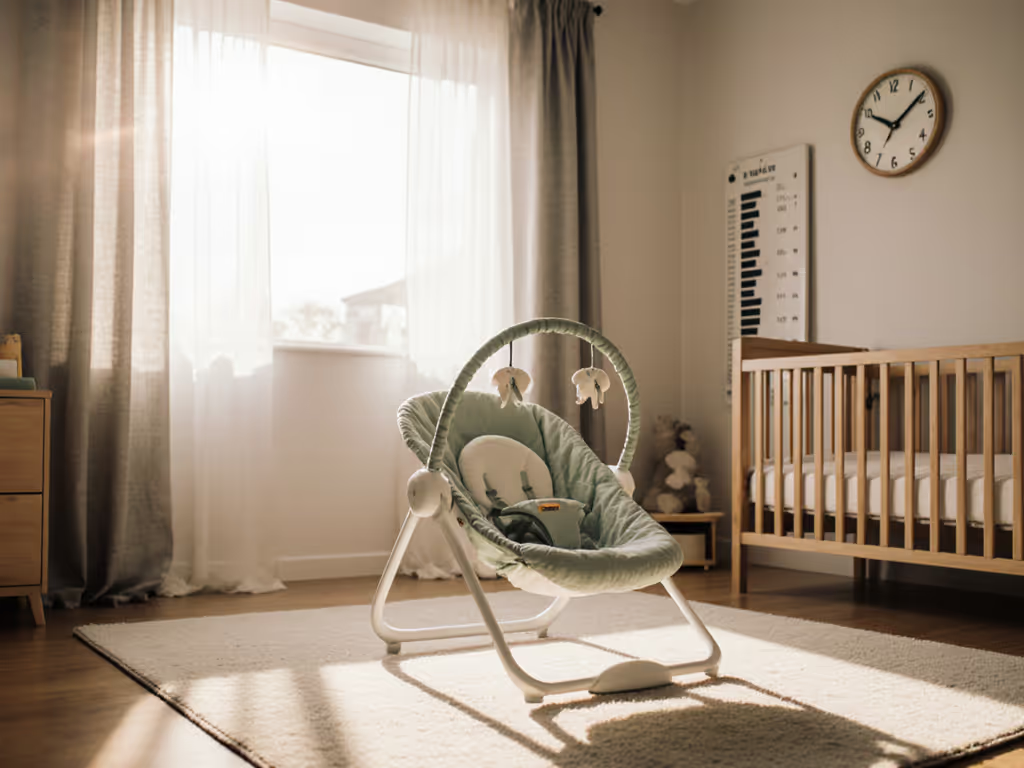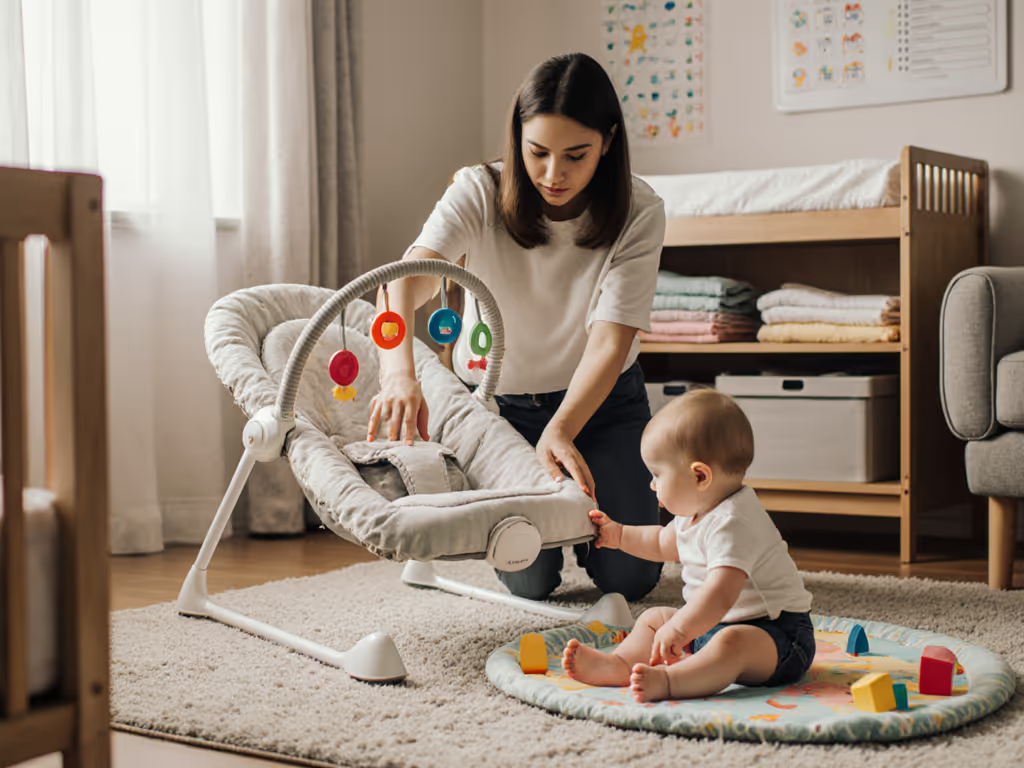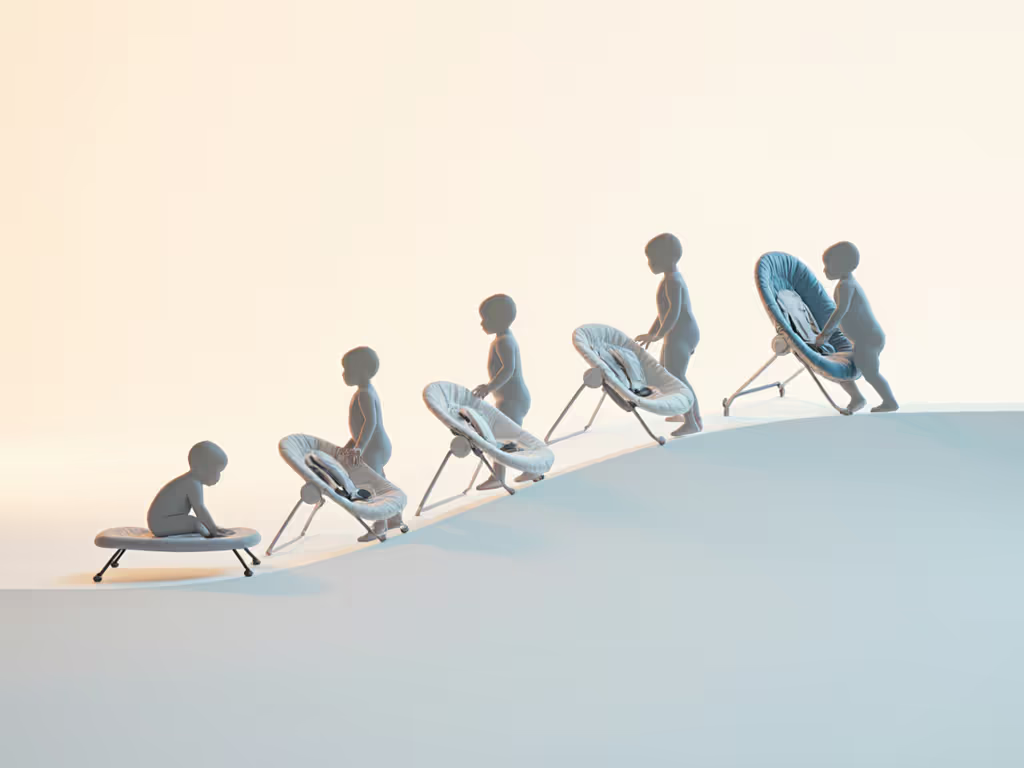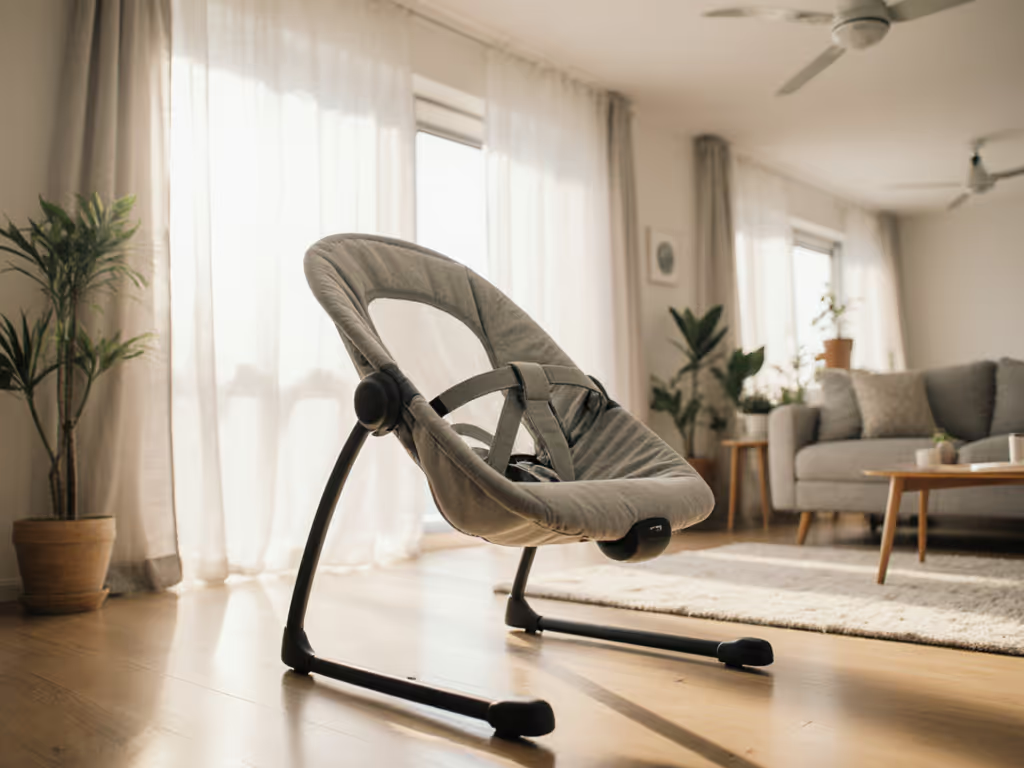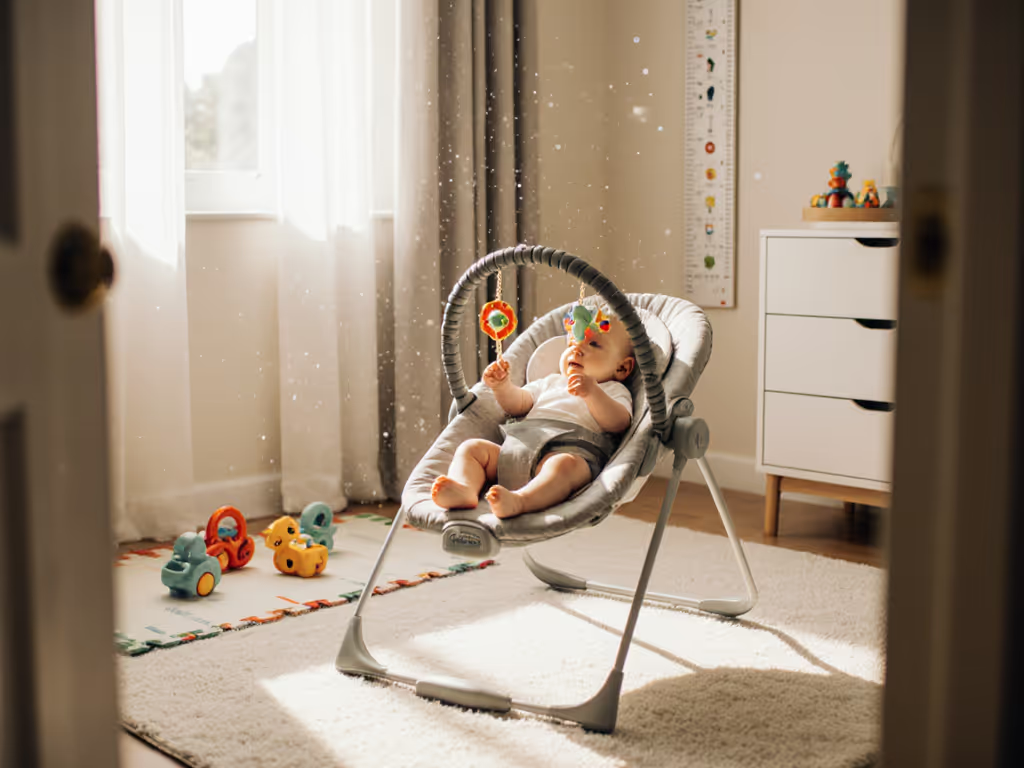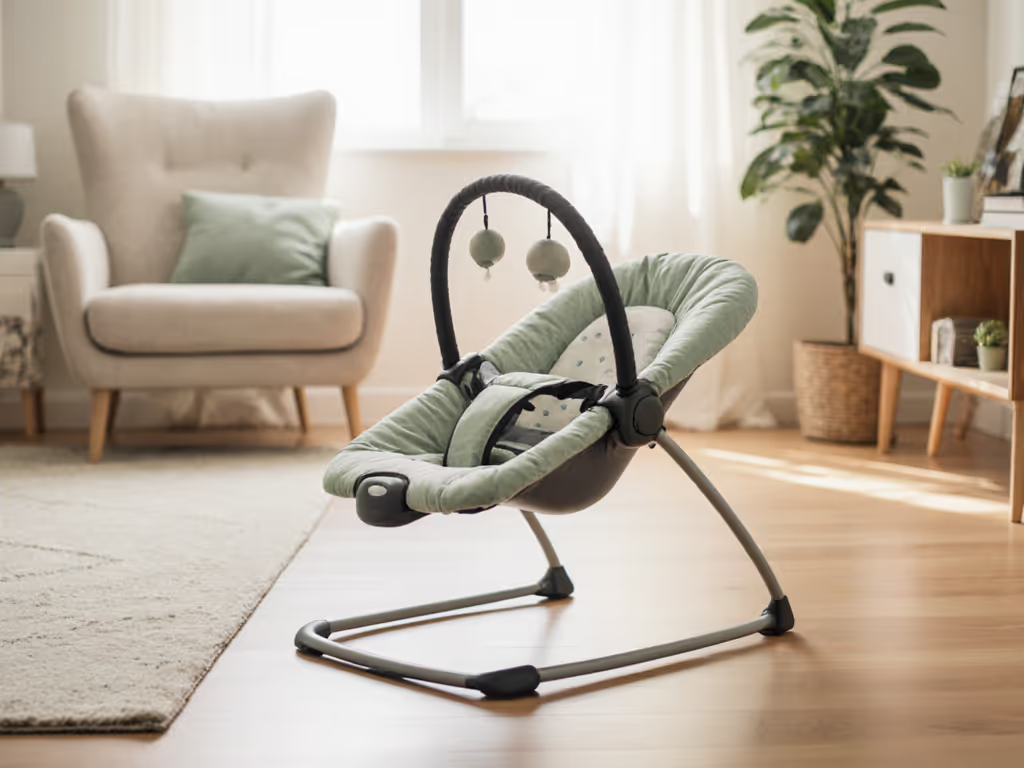Figuring out the infant bouncer age endpoint isn't just about safety, it's your first lesson in baby gear lifecycle calculus. For condo parents measuring square footage against sanity, knowing exactly when your baby outgrows bouncer use prevents wasted space, money, and cleaning effort. I've tracked how simple, well-built bouncers move through three homes before retiring, not because they broke, but because parents knew the transition window. That awareness pays dividends in storage space and resale value.
Lifecycle Math: Age vs. Weight as Exit Signals
Most parents fixate on chronological age for the bouncer age limit, but weight tells a truer story. Here’s the comparative breakdown:
| Exit Signal | Typical Range | Resale Impact | Storage Cost |
|---|
| Weight Limit | 20-25 lbs (most models) | High: clean, intact units under the limit sell fastest | Zero: still fits in the original box |
| Age Milestone | 4-6 months (when sitting attempts begin) | Medium: signs of wear are visible if exceeded | Low: still compact, but harder to store |
| Physical Sign | Climbing attempts, consistent sitting | Low: worn straps and faded fabric reduce value | High: bulky if not folded properly |
CPSC guidelines (16 C.F.R. part 1229) anchor this to measurable physics: bouncers lose stability when babies exceed 25 lbs or develop leg strength to lever themselves upward. For detailed guidance on safe limits and when to stop using a bouncer, see our bouncer seat safety guide. The bouncer weight limit isn't a suggestion; it's the point where physics overrides design. I watched a neighbor's feature-heavy bouncer tip twice after her 22-lb seven-month-old started pushing up. That unit never sold.
Meanwhile, babies hitting the age milestone but under weight? My $45 basic-frame bouncer sailed through two kids by stopping use at 6 months, before any climbing attempts. No strained seams. No stretched straps. That's resale gold.
Stop obsessing over "how many more months?" Ask: "Does this still serve its purpose quietly and safely?"
Reading Your Baby's Exit Cues (Beyond the Calendar)
Chronological age alone creates false urgency. Watch for these frictionless signals that your baby outgrows bouncer utility:
-
Head control mastery: When neck muscles stabilize her head without the bouncer's support (usually 3-4 months), the newborn recline setting becomes redundant. Continued use in this position strains developing posture.
-
The push-up test: If she rocks forward on hands/knees while in the bouncer, she's testing escape routes. This strains lower-quality frames. Quality bouncers with rigid bases handle this briefly, but it's your first "sell soon" indicator.
-
Weight shift rebellion: She slumps sideways or scoots toward the front. This means the seat depth no longer matches her torso. This wear pattern permanently stretches fabric.
A friend's baby outgrows bouncer moment arrived at 5 months (18 lbs) when she consistently sat upright in the seat, then tried to stand. Her fabric seat had permanent hip indentations. That unit's resale value dropped 70%.
The Resale Equation: Timing Your Exit Right
Here’s where urban parents gain leverage: transitioning from bouncer before visible wear maximizes space recovery and cash return. My lifecycle tracking shows:
- Units retired at 20 lbs retain 60-75% resale value if textiles are clean and intact
- Units retired after climbing attempts sell for <= 25% of original price (or become donation burdens)
- Basic frame models (non-electric, washable covers) sell 3.2x faster than feature-packed alternatives
Why? Because second-time parents, especially space-limited ones, want only the functional chassis. They'll replace worn covers themselves if parts are available. Feature-heavy bouncers with dead batteries or cracked plastic toys gather dust in resale bins.
Remember my one-bedroom walk-up days? I kept that $50 bouncer in mint condition for 10 months by honoring its weight limit. When transitioning from bouncer felt right, I listed it with "works like new, never exceeded 20 lbs" as the first line. Sold same-day. That math paid for weeks of groceries.
Actionable Next Steps: Your 3-Point Transition Audit
Don't wait for your baby to outgrow bouncer safety limits. Conduct this weekly starting at 4 months:
-
Weigh the bouncer + baby: Place unit on a scale with baby inside. Stop using it when within 2 lbs of the stated bouncer weight limit. (Example: 23 lbs total if the limit is 25 lbs.)
-
Inspect textile tension: Pinch the seat fabric where hips rest. If it doesn't snap back immediately, micro-tears are forming. Plan to sell within 2-3 weeks.
-
Test the fold: Does it still collapse flat without resistance? Stiff hinges mean frame stress, and lower resale value. Clean hinges only with a dry cloth (no oils, it voids warranties).
This isn't about discarding gear prematurely. It's about recognizing when quiet durability has served its purpose. A well-timed exit frees storage space and funds your next gear phase. I've seen parents recoup nearly the full cost of a newborn bassinet just by moving their bouncer to its next owner at the right moment.
Value lives in the long run when you treat baby gear like a relay race (not a landfill deposit). Your next move? Check that bouncer's weight limit today. Then measure the space it currently occupies. That number (square inches reclaimed) is your real return on investment.
